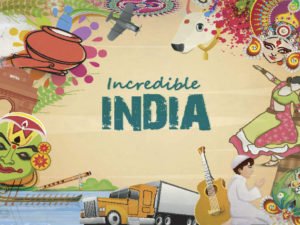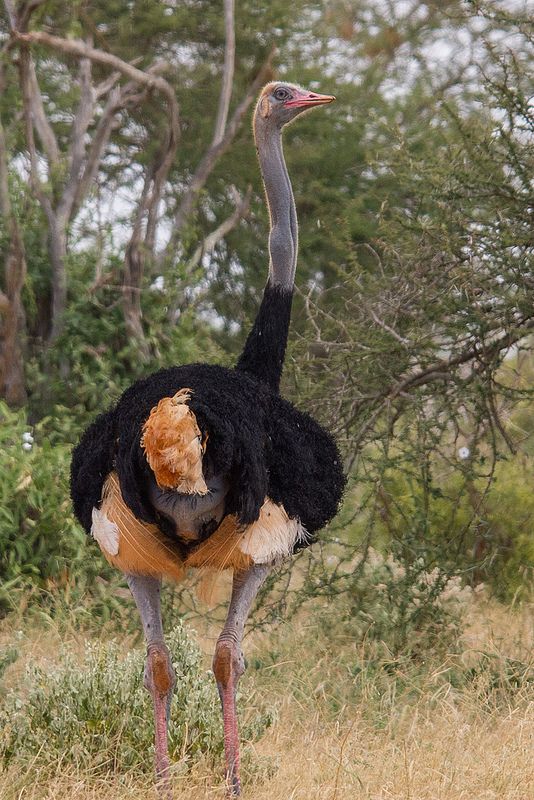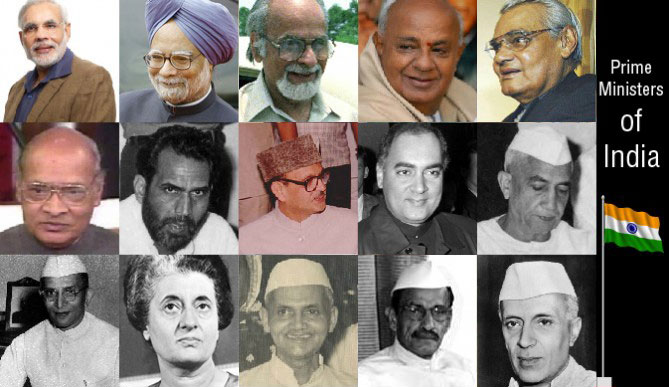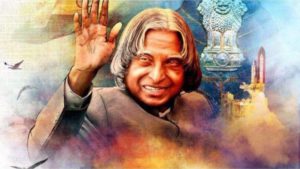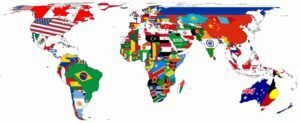Gotipua is one of the oldest dance forms in Odisha, a south eastern state of India. This traditional dance provided an inspiration to the now famous classical dance form Odissi. Gotipua has been in existence for centuries. It may not be as old as time, however it is quite old. Only young boys below the age of 12 practice this dance form, who dress up as females and perform the dance. In Priya, Goti means single and Pua means boys. Boys start picking up this dancing style at a tender age till they reach their adolescences. The robust training at such a tender age helps them change into elegant feminine performers. The training for this dance starts at the age of 4-5.
This is a religious dance form. This dance is performed to please the God Jagannath, an incarnation of Lord Krishna. It is mainly an acrobatic style dancing, requiring immense flexibility. Podium School has taken the initiative to spread a little bit more light on this beautiful and old dance form of India.
Gotipua History
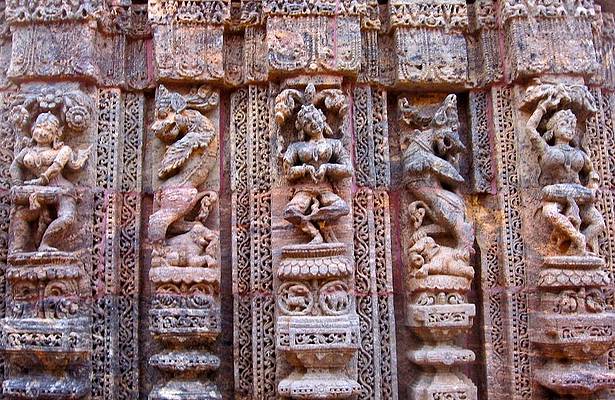
In the ancient times, the temples in Odissa had female dancers known as devadasis (or mahari). Moreover, these dancers had devotion for the God Jagannath, and this led to the rise of the Mahari dance form. There are sculptures of dancers in the Konark Sun and Jagannath Temples which demonstrate this ancient tradition still prevailing in this state of India. However, the mahari dancers came to decline in the 16th Century, during the reign of Rama Chandra Dev. Rama Chandra Dev founded the Bhoi Dynasty, and during his reign, the boy dancers continued this tradition. Gotipua dance is in the Odissi style, but the technique, costumes and presentation differ from that of the mahari dance form. Most masters of Odissi dance, such as Kelucharan Mohapatra, from Raghurajpur, were Gotipua dancers in their youth.
Girls are kept out of Gotipua dance as their bodies are presumed to be impure for a few days in a month, which is the reason why they can’t step into the temple. Boys from poor families between ages six to twelve are picked up, pressed into the service of the Lord. However, they are prohibited from dancing when they turn 12, for about three years because that is the time, they attain puberty. The aim and objective of the dance is to render happiness to Lord Siva and Lord Jagannath. In addition to that, Maguni Charan Das, the Padma Shri awardee and a recipient of the Odisha Sangeet Natak Akademi Award, was one of the masters of the Gotipua dance.
Every year, Guru Kelucharan Mohapatra organizes the Gotipua Dance Festival in Bhubaneswar. It is a sight for all to see and a must visit for everyone who hasn’t yet.
Gotipua Costumes
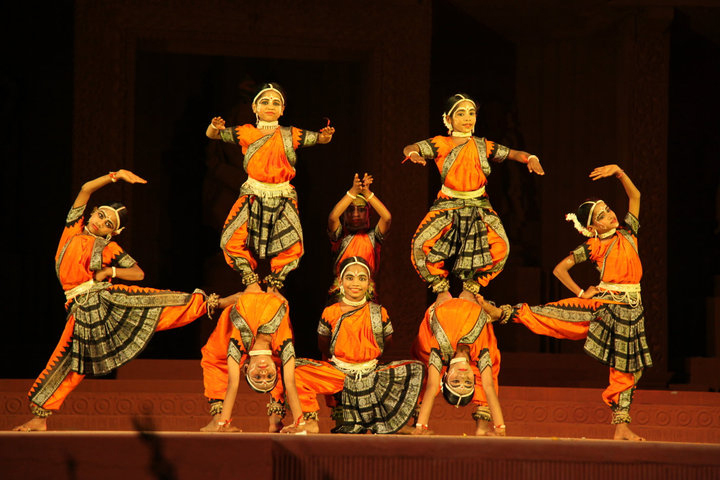
The dance costume has evolved over time from what it used to be in the olden times. The traditional dress worn by the dancers is called “Kanchula”. The Kanchula is a bright colored blouse with shiny embellishments with an embroidered silk cloth tied around the waist; called “nibibandha”. However, the gotipua dancers have given up their traditional costume due to the influence of the modern times. In certain cases, they still adhere to the tradition. They use the pattasari which is arounf four metres long made with one piece of tissue; which is worn tightly by having equal lengths of material on both sides, and by tying a knot on the navel. But traditional dresses are often replaced by a new designed cloth which is easier for dressing consuming short time.

Moreover, the dancers wear specially designed jewelry made with beads: necklaces, bracelets, armbands, and ear ornaments. The nose piercing jewelry has been replaced nowadays by a painted motif. Addition of ankle bells to accentuate the beats tapped out by the feet is a must. The costume, jewelry and bells are sacred items.
Gotipua Dance Make up
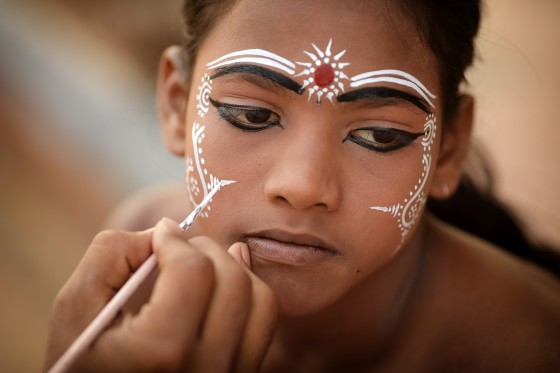
For transforming themselves into graceful feminine dancers, the boys do not cut their hair to make an elaborate hairdo in a high and top knot. Garlands of beautiful various flowers are woven into the hair of all the dancers. They also apply make-up on their face with white and red powder mixed. Kohl is applied around the eyes with a broad outline to give them an elongated look fit for this dance form, i.e. Gotipua. The Bindi, which is a red dot is applied on the forehead with a pattern made from sandalwood around it, making them look almost like a bride in Indian weddings. Moreover, traditional paintings adorn the face of each dancer. The Palms and soles of the foot are painted with a red liquid called “Alta”.
Gotipua Dance Repertoire
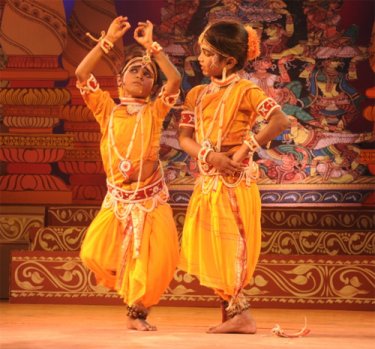
Gotipua as a dance form starts with a Vandana prayer, it refers to offering prayer to the Gods and the guru or the teacher, who teach the dance form to the students. Moreover, Sa Re Ga Ma which depicts pure dance number highlights the beauty and mastery of the technique. Abhinaya where the dancers enact the songs based on the interpretation of ancient poetry and the most interesting Bandha Nrutya where acrobatic postures are presented to represent Radha and Krishna.
Final thoughts
Podium School encourages all the young and wee kids and youngsters out there to take up this dance form. If not, this will get lost among the modern dance forms which are becoming so prevalent. We need the youngsters to keep the history of India alive. Learn more about dance forms from our website. Please visit Podium School.
Share with your friends

